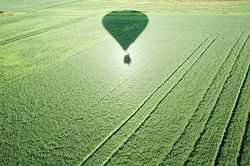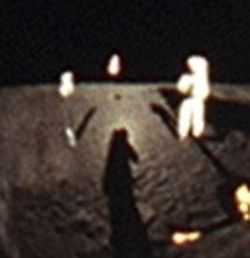Heiligenschein

Heiligenschein (German for "halo" or "aureola" and literally translated "holy (or saintly) appearance," pronounced [ˈhaɪlɪɡənˌʃaɪn]), (see also the article for halo (optical phenomenon)) is an optical phenomenon which creates a bright spot around the shadow of the viewer's head. It is created when the surface on which the shadow falls has special optical characteristics. Both dry dusty surfaces and dewy grass are known to exhibit these characteristics. Nearly spherical dew droplets act as lenses to focus the light on the surface beneath them. Some of this light 'backscatters' in the direction of the sunlight as it passes back through the dew droplet. This makes the antisolar point appear the brightest.

The glory creates a similar halo effect by a different mechanism.
Cultural references
In the 2006 Scripps National Spelling Bee, this was the word which eliminated contestant Rajiv Tarigopula, who finished fourth for the second consecutive year.[2] This was the first year this competition was televised live in a primetime broadcast on this network, and this event involving "heiligenschein" is credited with increasing the prominence of the spelling bee in national culture.[3]
See also
- Aureole effect
- Gegenschein
- Glory
- Retroreflection
- Subparhelic circle
- Sylvanshine
- opposition effect
External links
| Look up heiligenschein in Wiktionary, the free dictionary. |